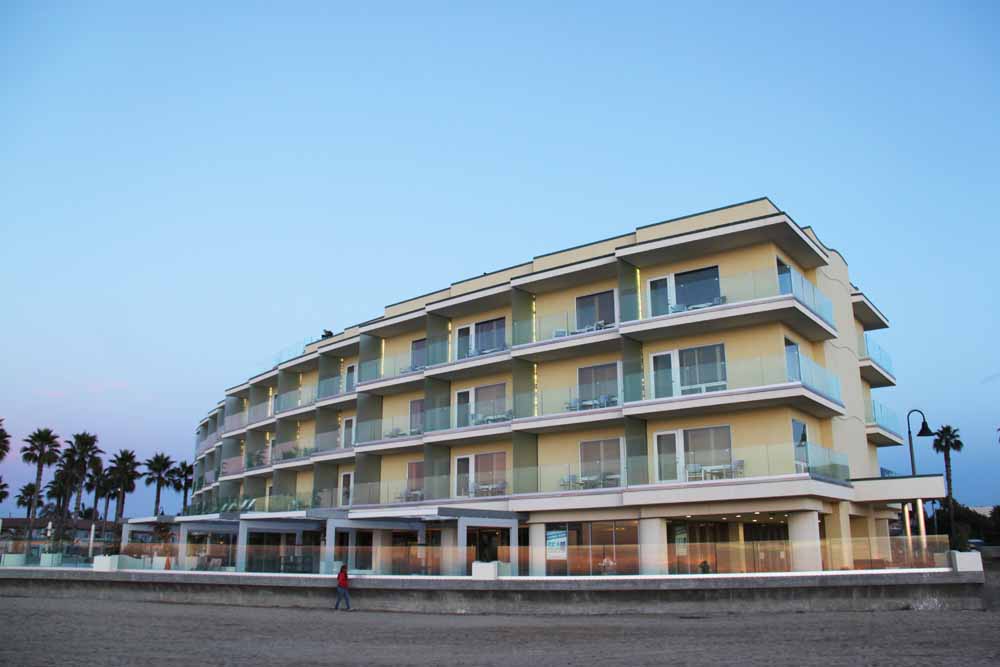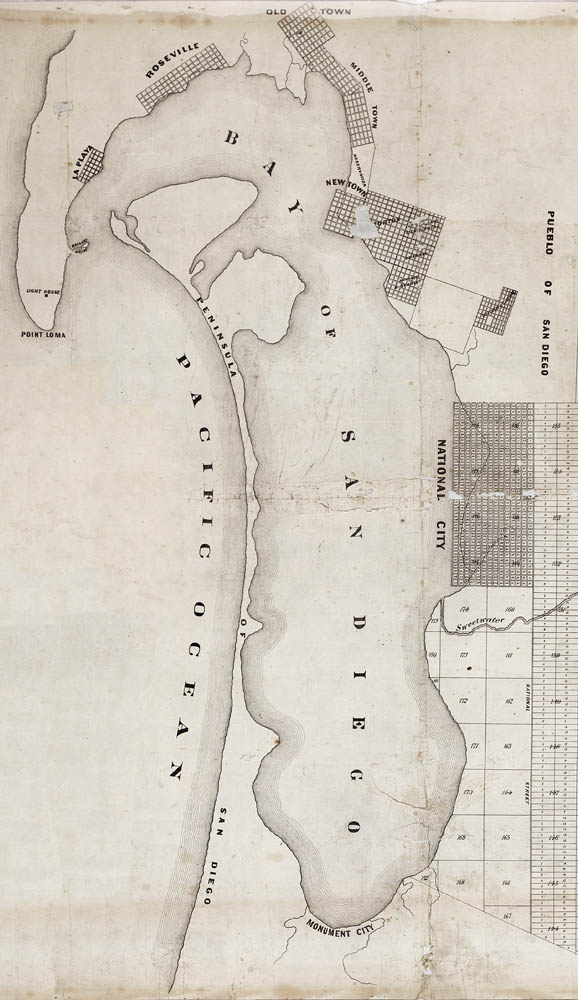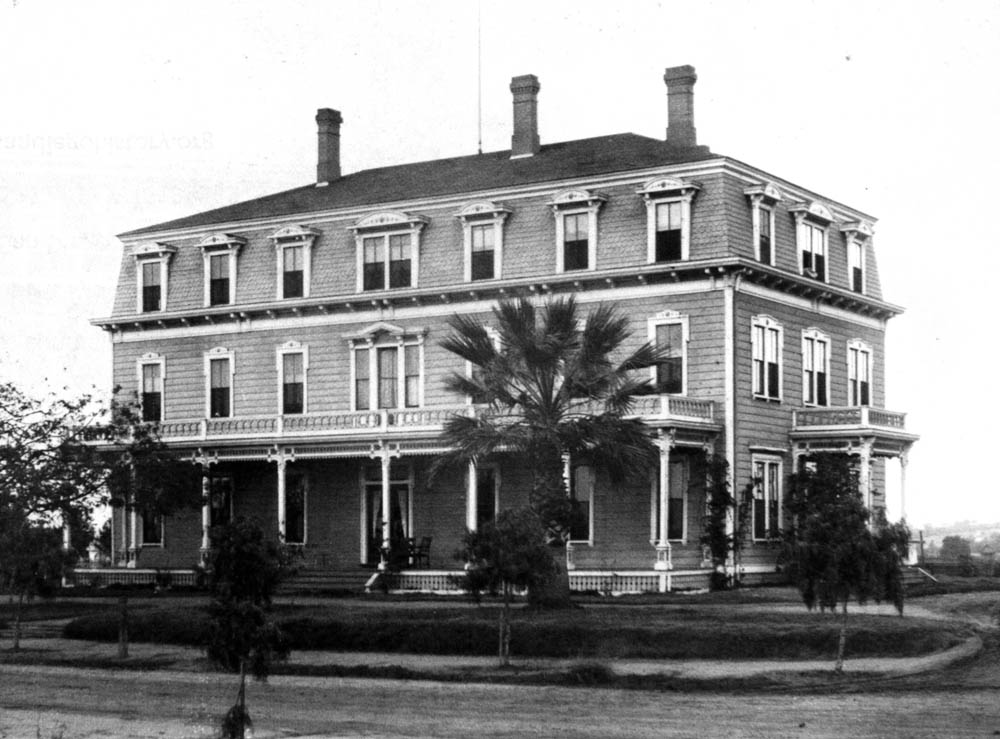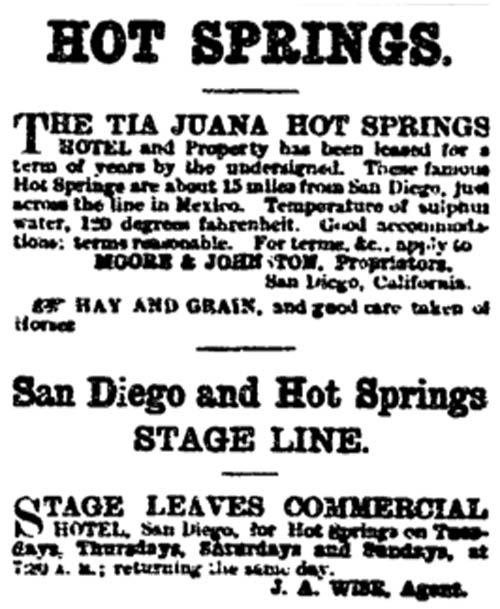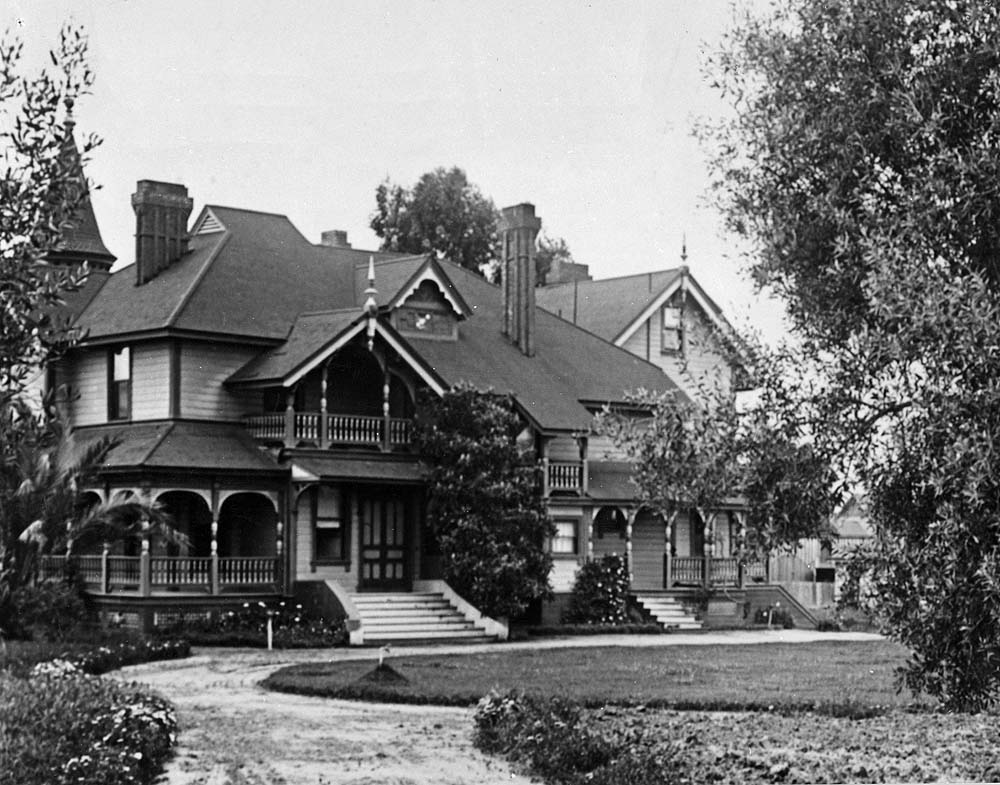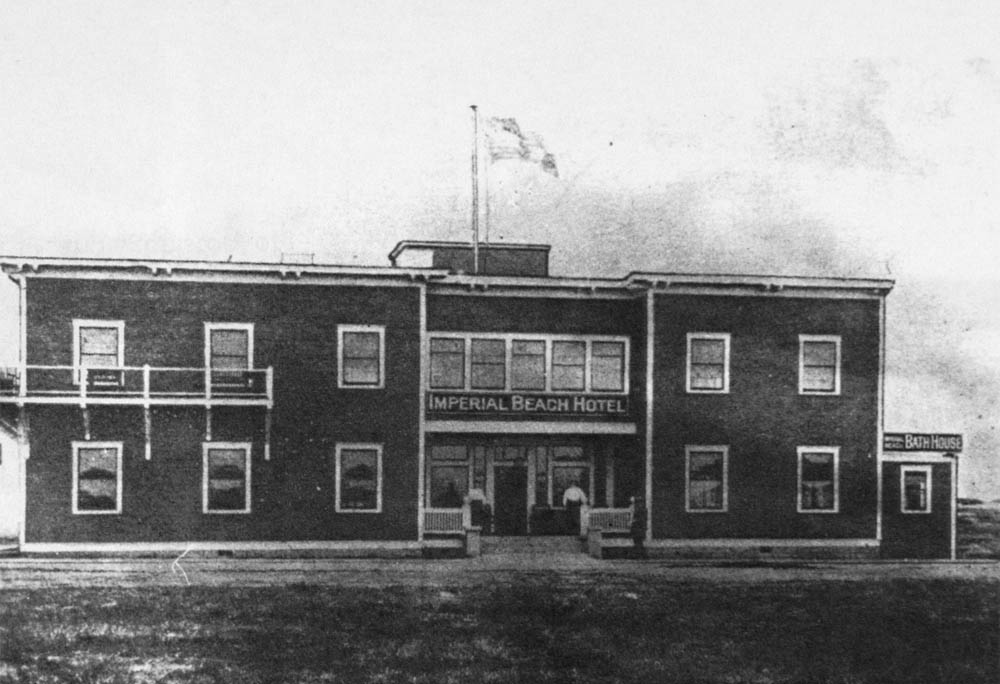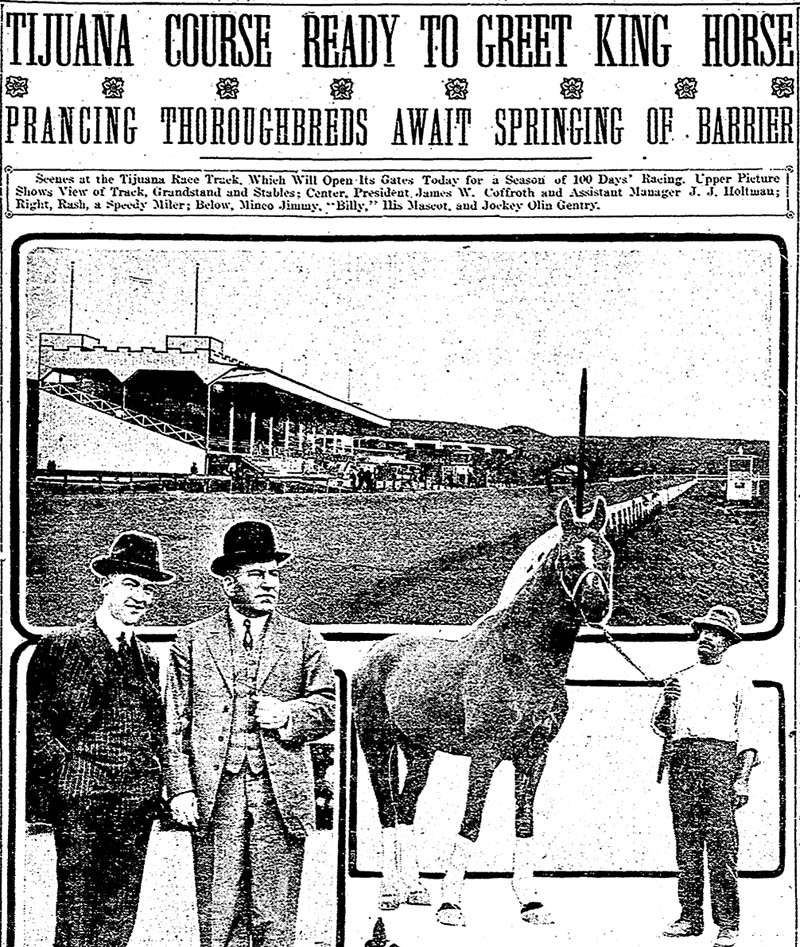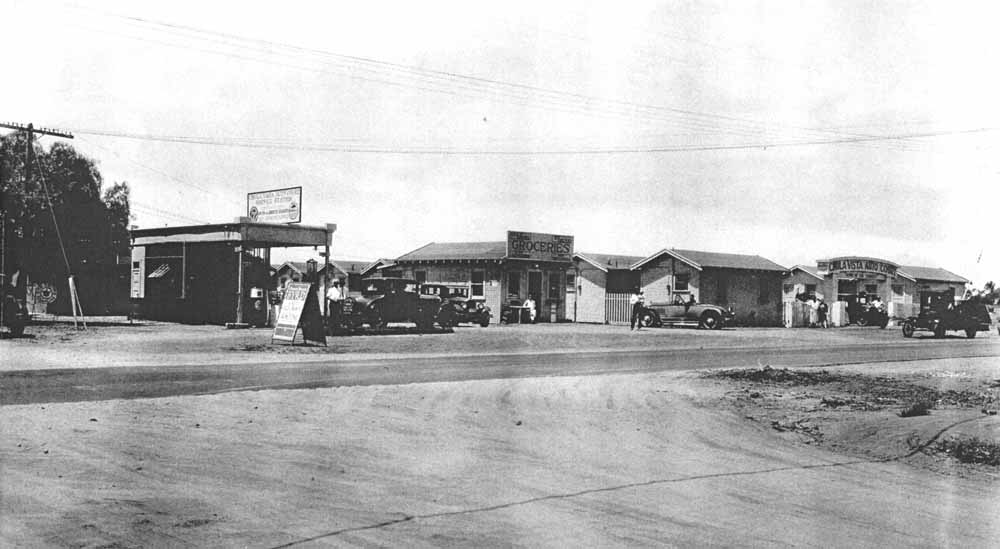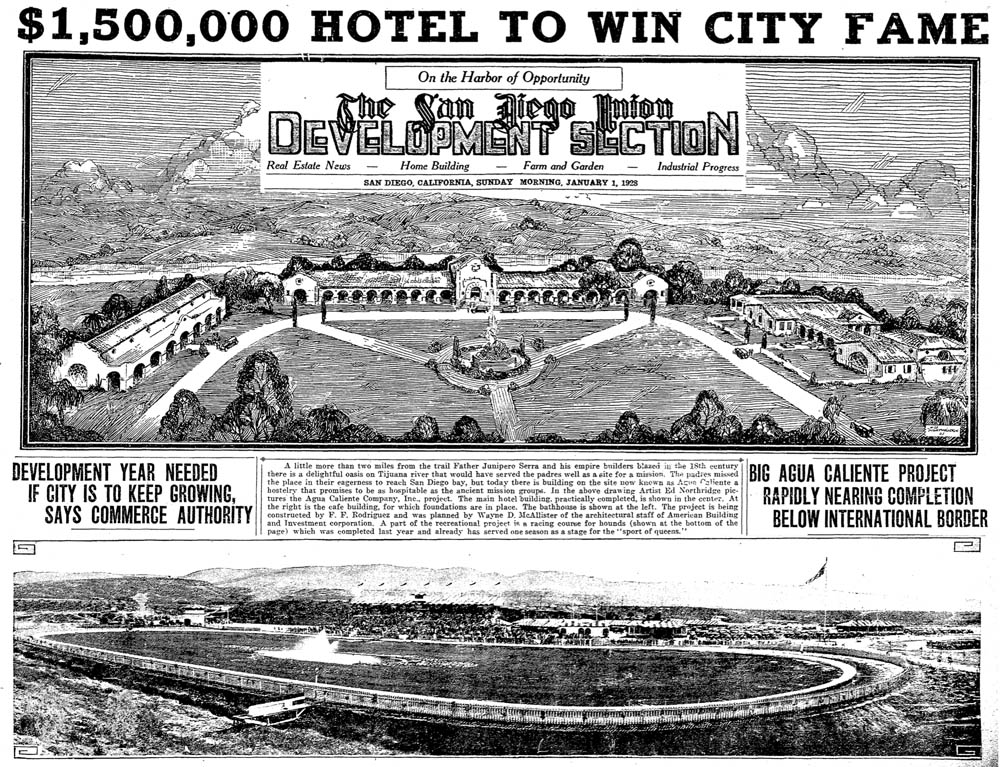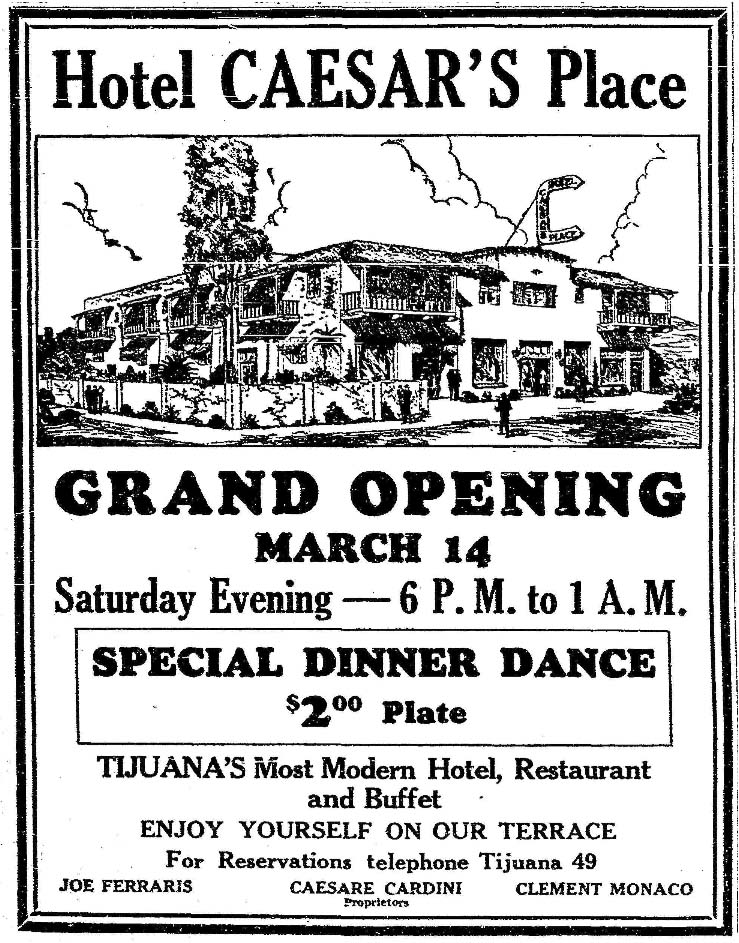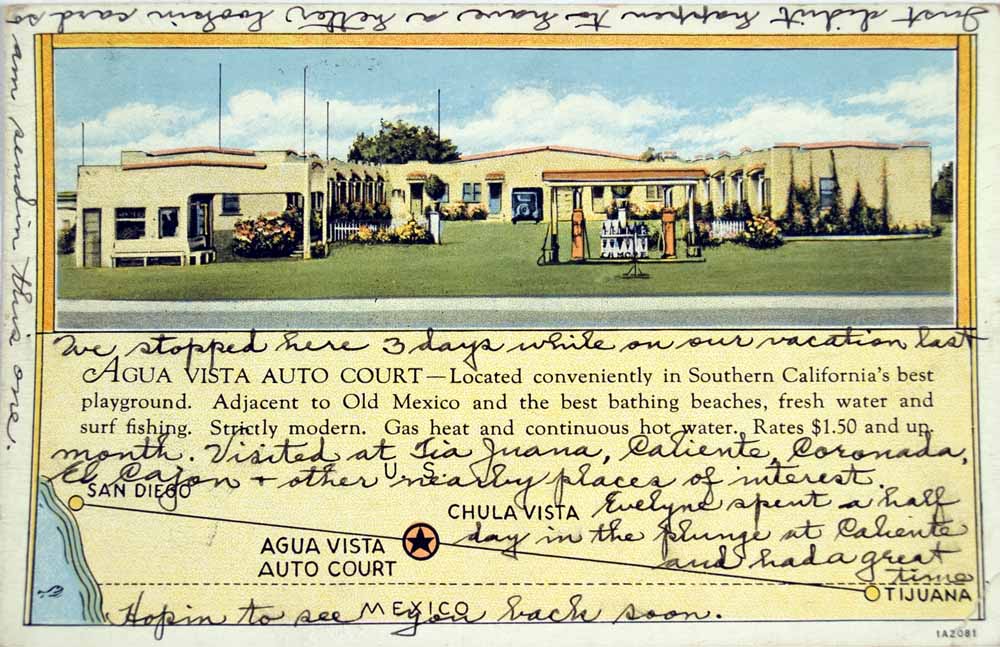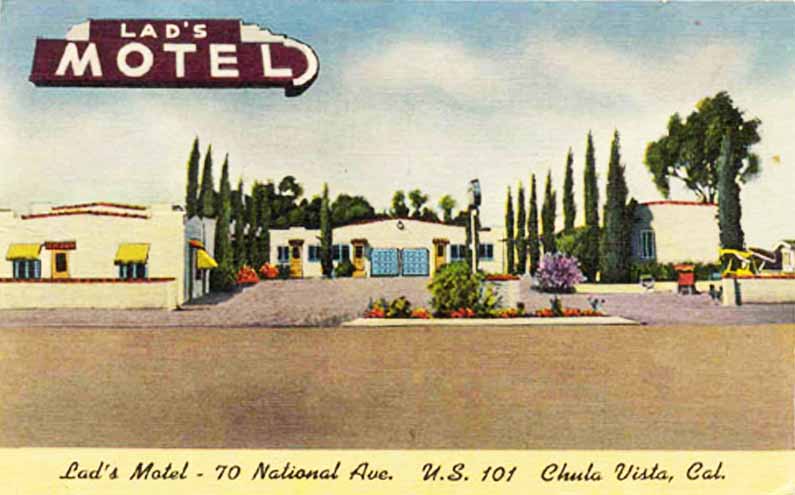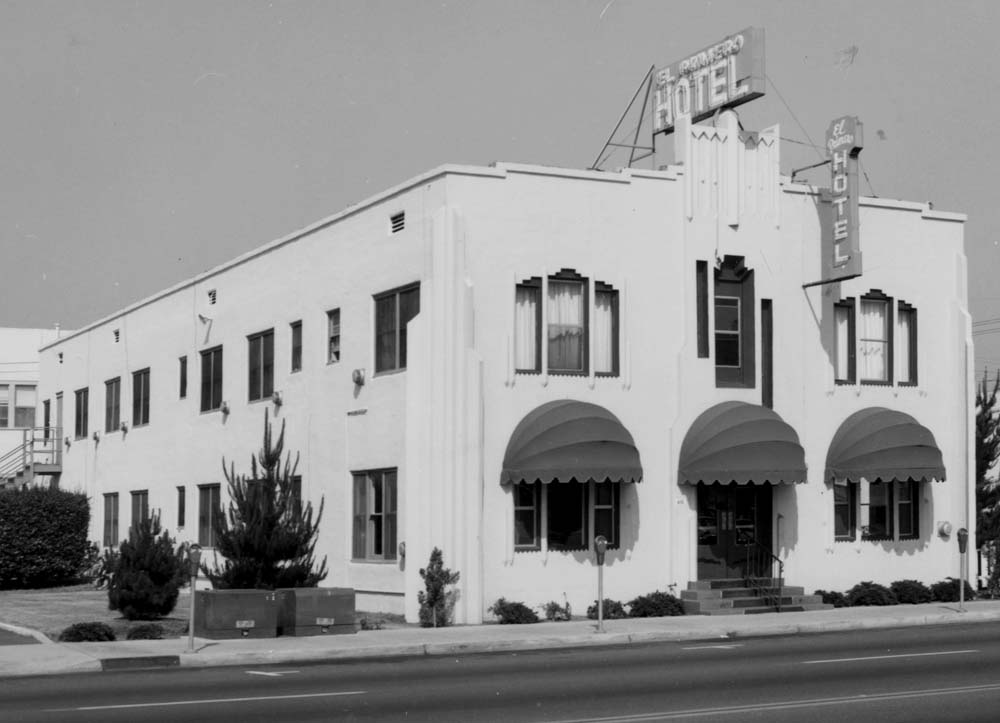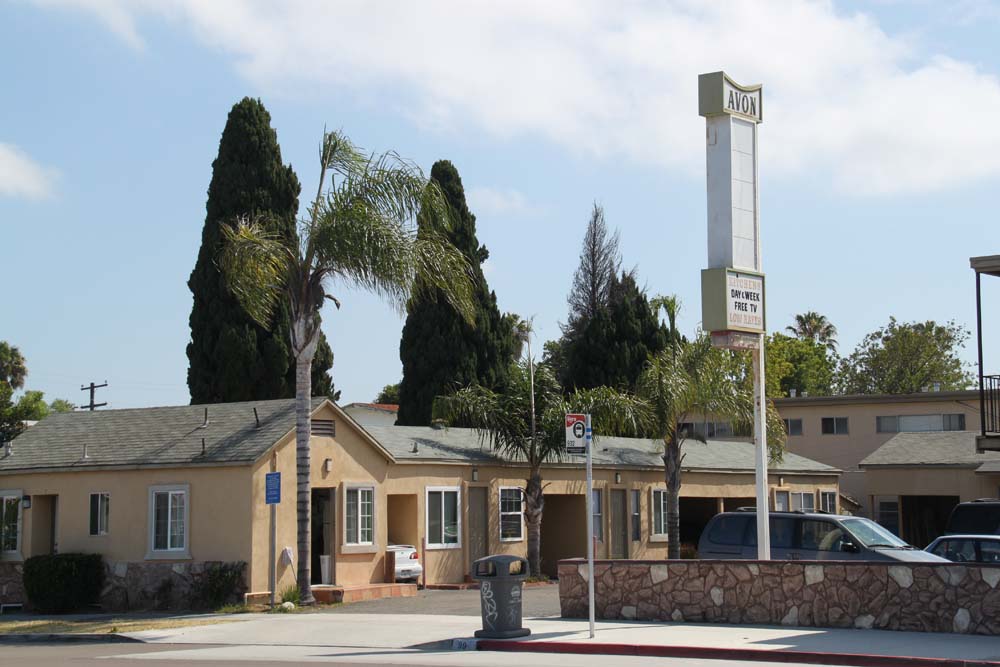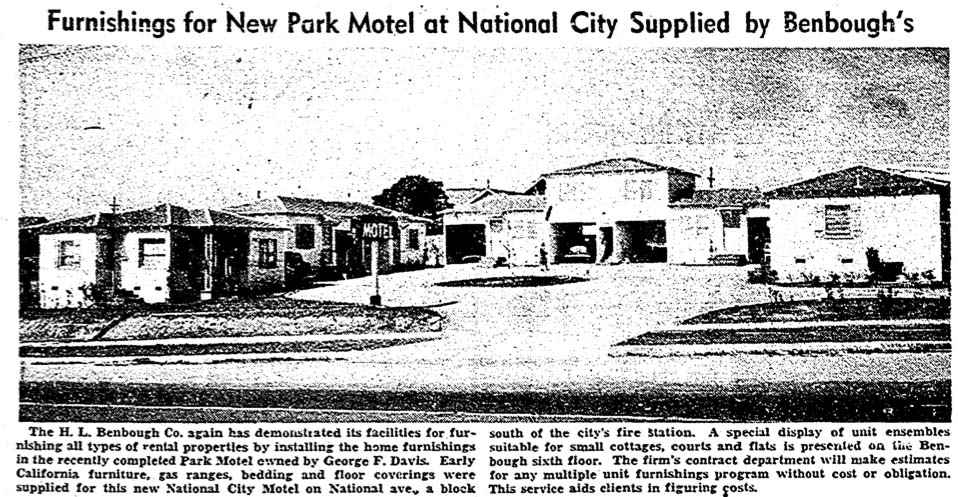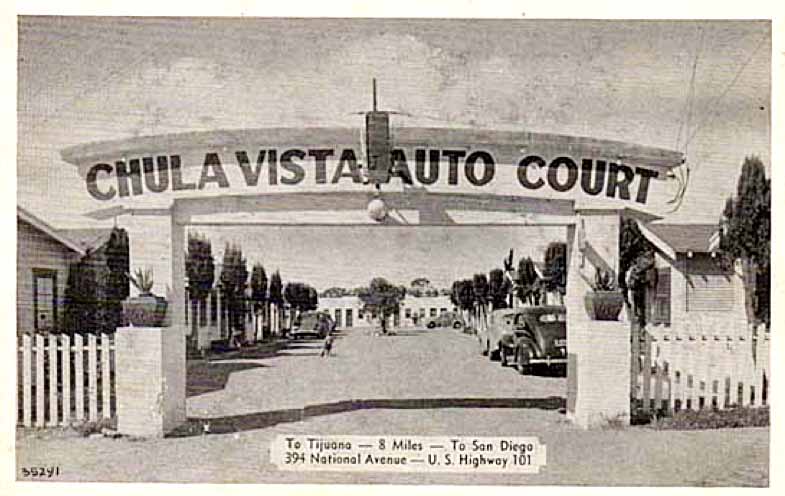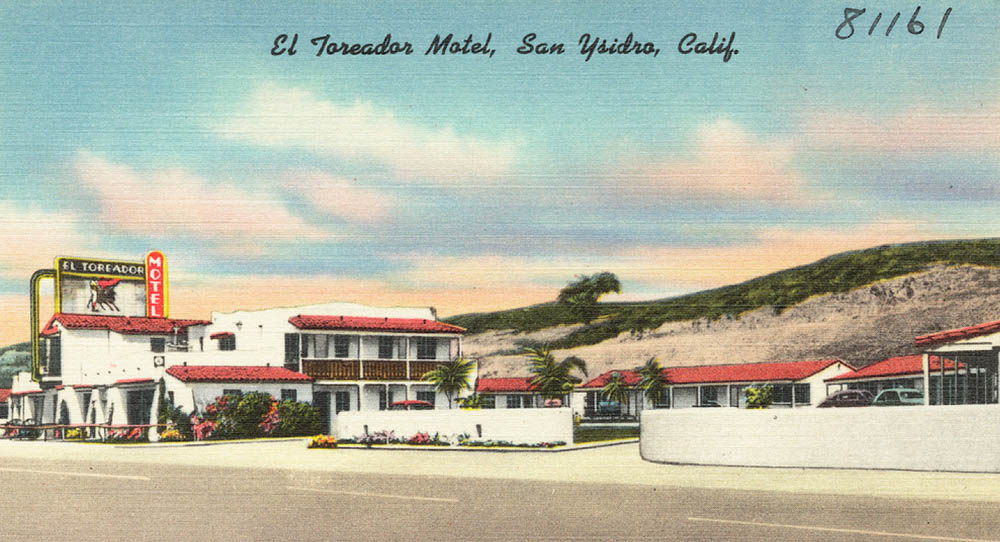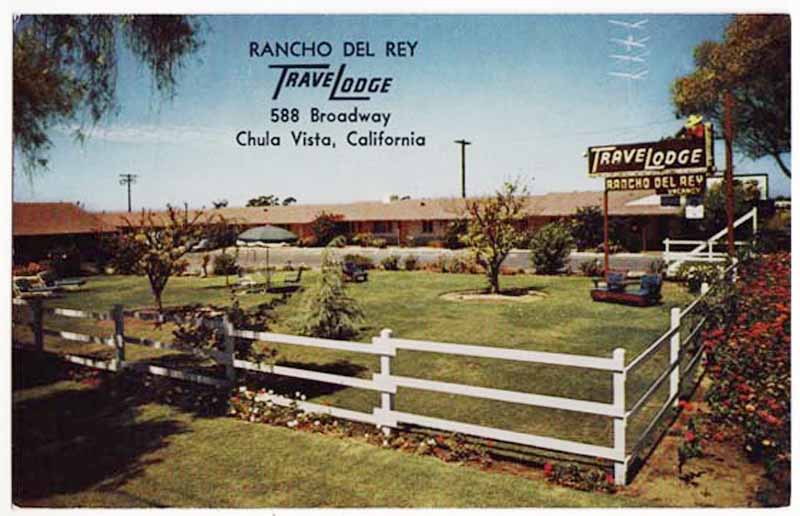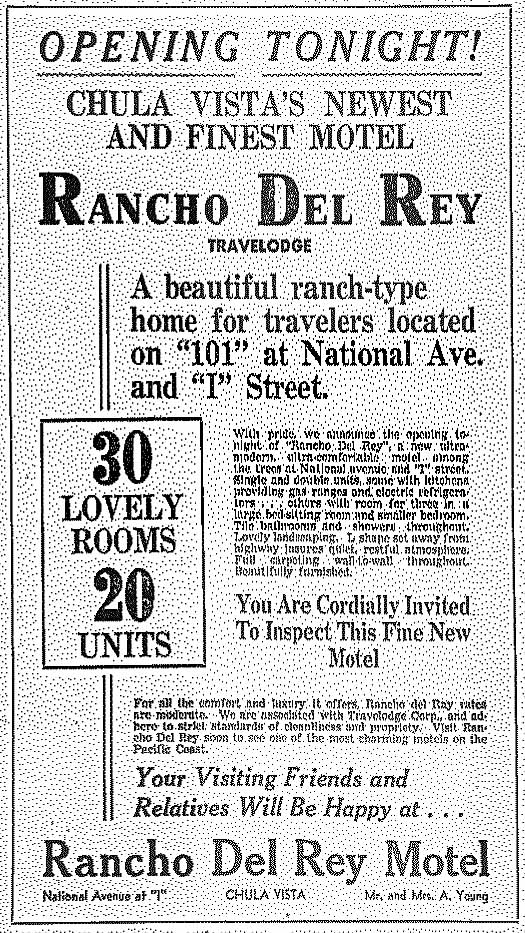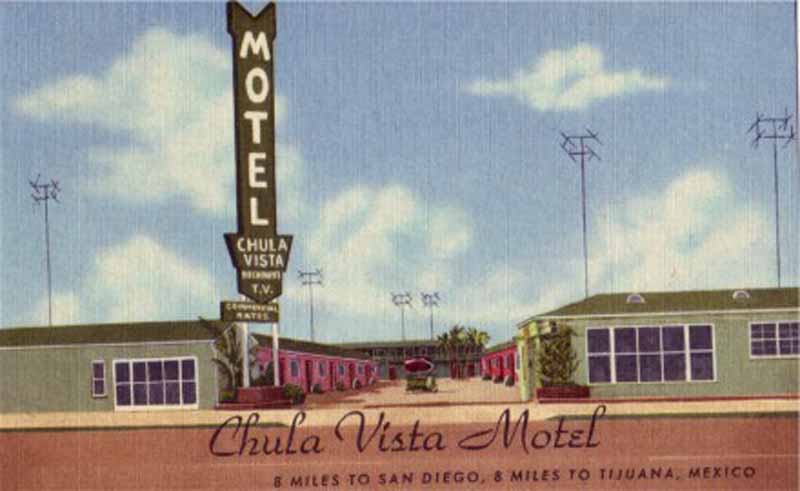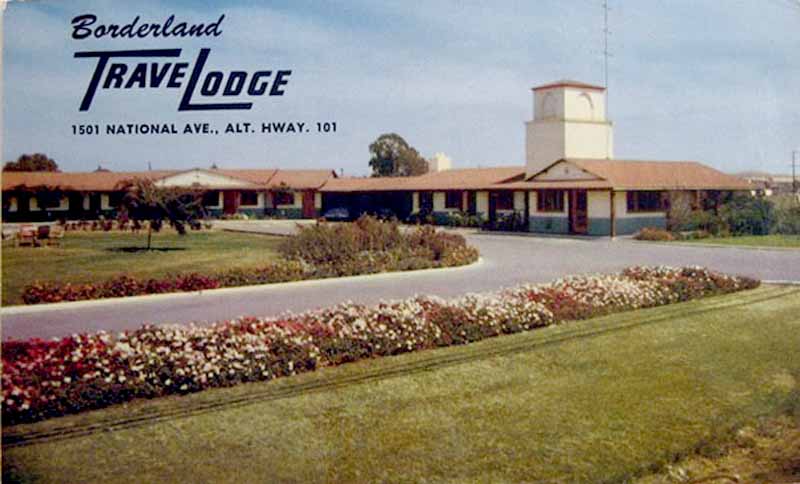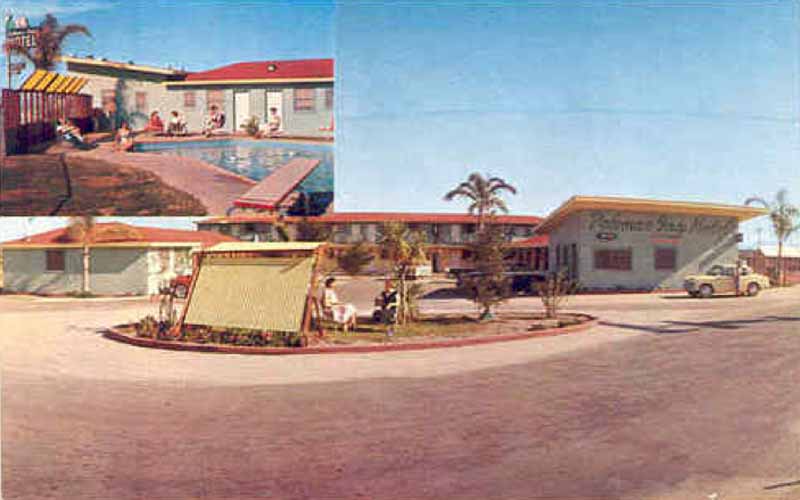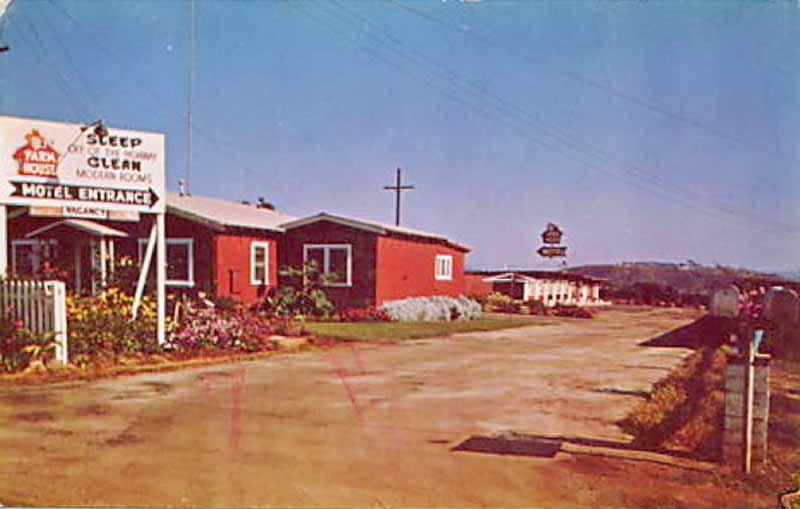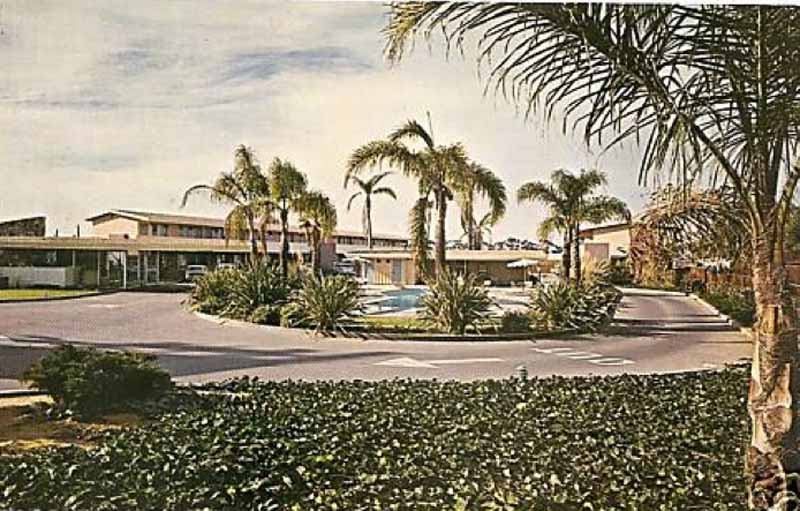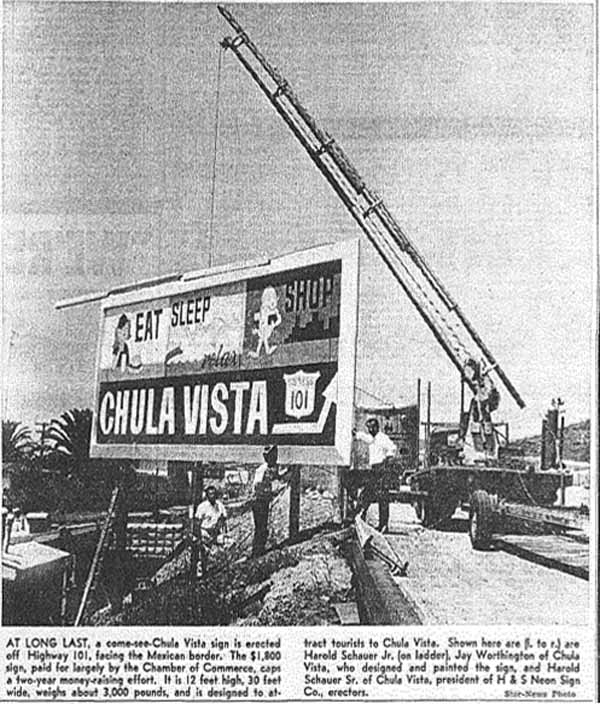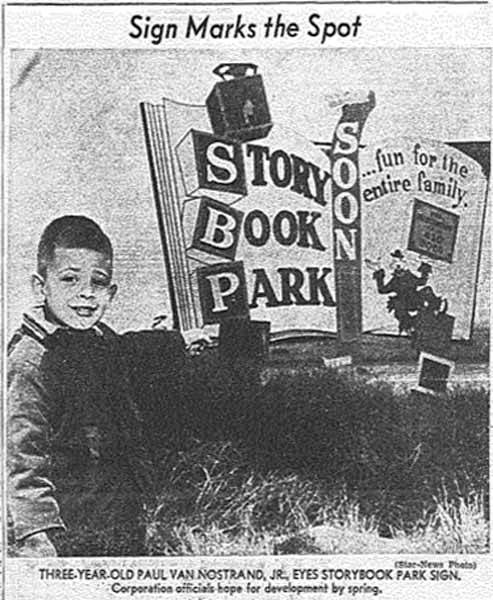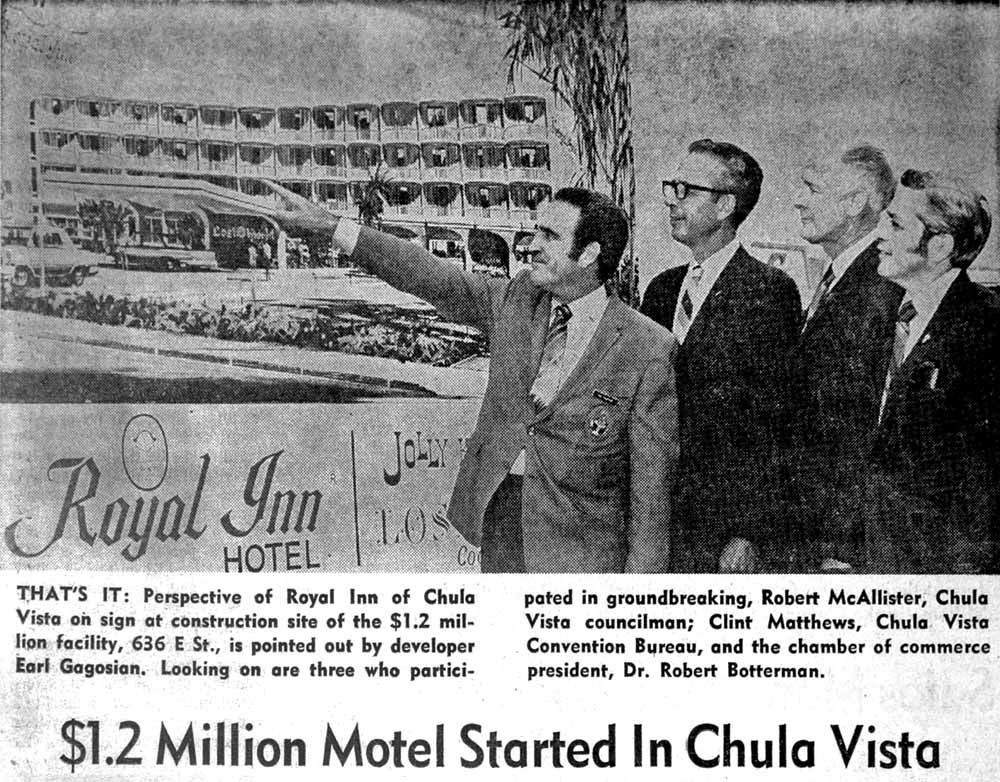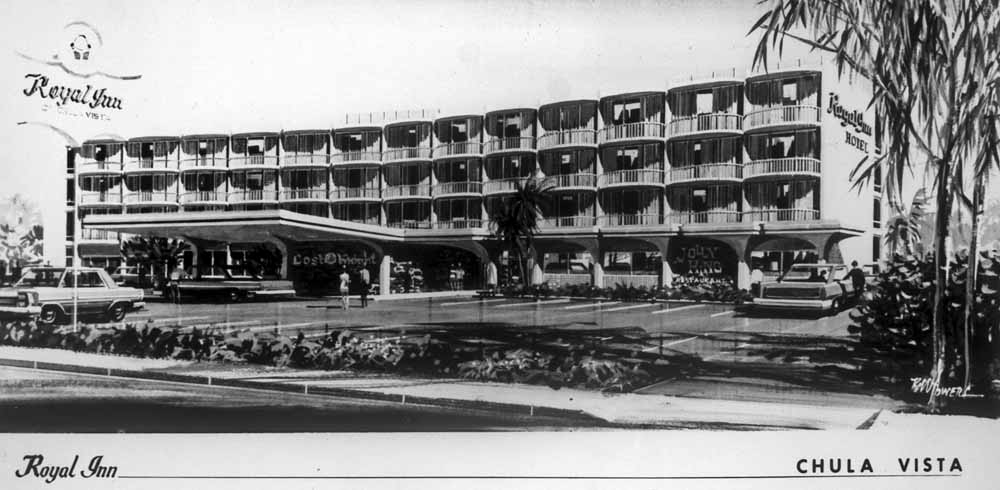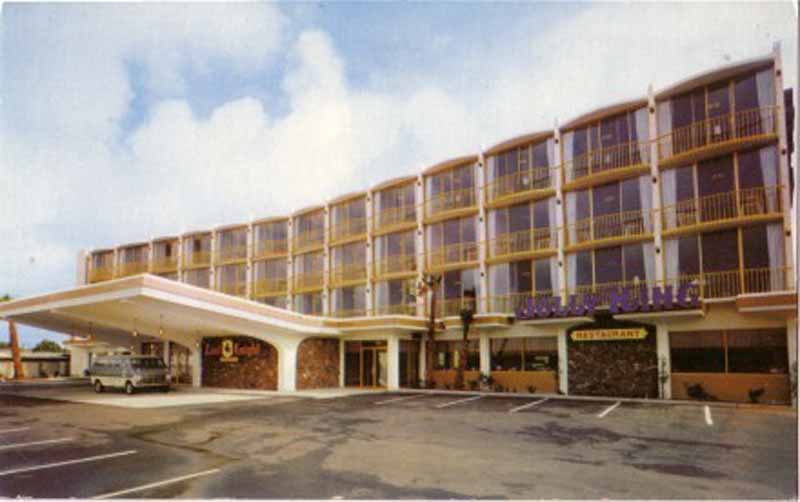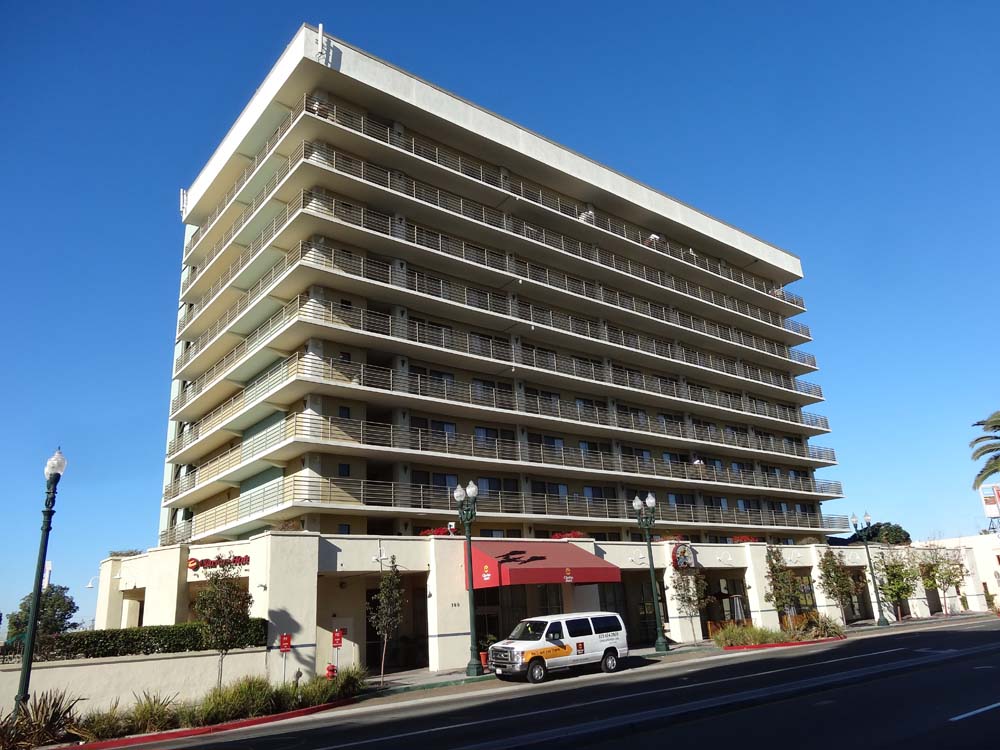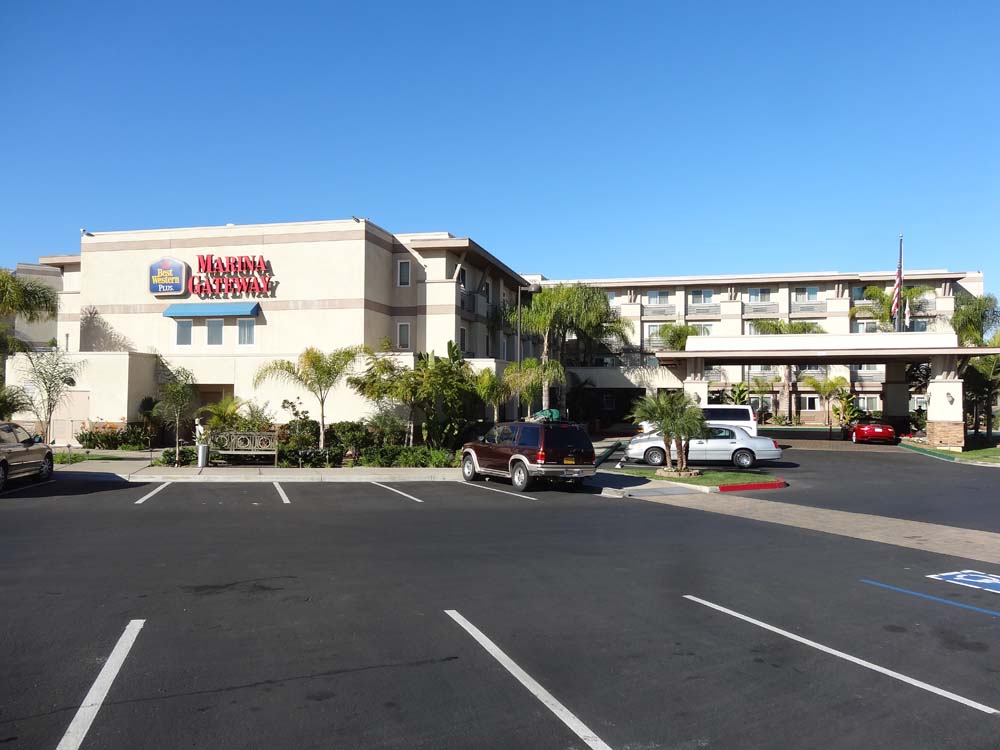|
South Bay Historical Society
Home •
About Us •
Next Meeting •
Latest News •
Resources •
Maps •
Exhibits •
Organizations •
Histories •
Contact
|
|||||||||||||||||||||||||||||||
|
Hotels and Motels in the South Bay
Imperial Beach has the unique distinction of being the site of the first and the latest hotels in the South Bay. The Pier South Hotel (pictured above) opened Jan. 15 on the Imperial Beach oceanfront.
The first hotel in the South Bay was the Bay View House that opened in 1869 at the southern end of the bay near today's Palm and 13th Street. The first hotel in the new county of San Diego was the Commercial House in Old Town in 1850. It was soon joined by the Exchange Hotel in 1851 that was replaced by the three-story Franklin House in 1856. William Heath Davis built the New San Diego Hotel in 1850 but it soon failed when his New Town addition collapsed. Alonzo Horton was more successful in 1867 when he began development of the 800-acre Horton's Addition and built a wharf at the end of 5th Avenue in 1869. The wharf and the stage coach lines from the Old Town hotels improved communication throughout the bay area. A group of American settlers founded Monument City at the "Head of the Bay" as the southern end of San Diego Bay was called at that time. S. S. Nichols built his Bay View House hotel at what is today the intersection of Palm Avenue and 13th Street in Imperial Beach. The stage coach came from the Franklin House in Old Town three times a week. Boats could dock at the Gould Recreation and Bath Houses near the Nichols Hotel that had an arbor with a planked floor from the bay to the hotel. The newspaper reported "the scenery from the point where the arbor was located was truly magnificent. Being within a few yards of the beach, where the surf rolled with a tremendous roar, and situated at the head of the beautiful San Diego Bay, and directly opposite the great mountain forming the boundary between Mexico and the United States, a more sightly spot could not be found. The people came from all quarters in all sorts of ways." At the southeast end of the bay, near the salt ponds around the mouth of the Otay River, Capt. Alfred H. Wilcox leased his 82-acre Fruitlands ranch to Henry von Poser who built a resort and picnic area called "La Punta Gardens." Wilcox had married the daughter of Santiago Arguello who had owned the Tijuana and Melijos ranchos in the Mexican era that encompassed most of the area of the South Bay around the Tijuana and Otay rivers. Arguello had built his adobe home called La Punta, located on the El Camino Real. For many years it was the only residence on the road south from San Diego to the Mexican border. After the war with Mexico, Arguello was unable to keep is ranchos, and the South Bay became public domain open to homesteaders. The settlement of Monument City was a result of this homesteading of Arguello's old ranchos.
The National Ranch was surveyed by George Morrill in 1868 for Frank Kimball who developed National City along the bay and the National Street south to the border of the old Arguello ranchos.
1868 - Frank Kimball established National City with a thriving business center along National Avenue. By 1881 there were four hotels in his city, the Palmer House, the Reed Hotel, the Railroad House and National Hotel, both owned by Asa Adams. When Kimball brought the Santa Fe Railroad to National City in 1882, the International Hotel was built at 5th Avenue and 22nd Street.
The International Hotel was built by the Santa Fe Railroad in 1882. It was moved away from the route of the San Diego and Arizona Railroad in 1906, to 6th Avenue and 23rd Street, and was renamed the San Miguel Hotel.
1882 - The promise of another railroad from San Diego through Mexico to connect with the Santa Fe Railroad in Arizona caused a spurt of growth at the border crossing on the Tijuana River where George Washington Barber had built a general store in 1865. A Custom House was built on the Mexican side to handle the growing number of people crossing the border between the Mexican and American parts of the town of Tia Juana that straddled the border. Asa Adams developed a hotel at the hot springs south of Tia Juana that was near the railroad route. This would later become the Agua Caliente resort near the San Diego and Arizona railroad line.
The Tia Juana Hot Springs Hotel was served by the stage line from the Commercial Hotel in Old Town San Diego in May, 1882.
1885 - The opening of the California Southern Railroad on Nov. 18 connecting National City and San Diego with the transcontinental line of the Atchison, Topeka, and Santa Fe Railroad set off the "Great Boom." Population surged and new towns sprang up. In National City, new hotels were the Occidental Hotel built by George Chase and the Royal Hotel in the Steele Building. Frank Kimball built the Sixth Avenue Hotel that later was bought by Wilhelm Hamann and was known as the Hamann Hotel until in was demolished in 1962. 1886 - Elisha Babcock bought the peninsula of Coronado and began construction of the Hotel del Coronado that opened Feb. 14, 1888. To provide water and hunting grounds for his hotel guests, Babcock bought much of the Otay Valley and the lands around the southern bay. He built the Lower Otay Dam and a pipeline to Coronado, and planned the new town of Coronado Heights along the southwest side of the bay. 1887 - Kimball and the Santa Fe Railroad began to develop the unused lands of the National Ranch, building the National City and Otay Railroad that ran through Chula Vista south to the boom towns of Otay and Oneonta where hotels were built. The new town of International City was planned near the border monument at the ocean, and advertising the great Monument Hotel, but it was never built. The railroad reached the border at the new town of Tia Juana City, developed in 1887 by the real estate firm of Hart and Stern, that included the Tia Juana Hotel and the Gorman Lodging House. 1891 - The Feb. flood of the Tijuana River destroyed the National City and Otay Railroad south of Otay, causing the new towns of Oneonta and International City to wither and die. Much of the American town of Tia Juana City was washed away and never rebuilt. The land was purchased by George Belcher and became part of the large Belcher ranch. The Tia Juana on the Mexican side moved to higher ground and continued to develop as the City of Tijuana.
The Herman Hotel in Chula Vista was open from 1894 to 1913.
1894 - The Herman Hotel opened at 50 F Street in Chula Vista. Charles and Minnie Herman had lived in their elaborate Victorian home called "Las Flores" since 1888 and decided in 1894 to convert its 18 rooms to a hotel. It was a landmark in the city until it was destroyed by fire around 1913. 1906 - The South San Diego Company that had been organized by R. R. Morrison in 1887 was reorganized in 1906 and shifted its development efforts to the new Imperial Beach subdivision along the ocean front south of Coronado Heights. The company built a boardwalk and fishing pier in 1909, and a local trolley line brought visitors from boats that docked at the newly-dredged South Bay channel. The Coronado Beltline Railroad connected the South Bay with San Diego and Coronado. A newly-surfaced Surf Line road brought a steady stream of cars from the Hotel del Coronado.
The Imperial Beach Hotel was built at Palm and 1st Street in 1909 to promote the new town of Imperial Beach by the South San Diego Company.
1909 - William E. Smythe established the Little Landers Colony April 9 on 550 acres of the old Belcher ranch, and officially incorporated the new town of San Ysidro August 6. The Belcher ranchhouse built in 1895 became the San Ysidro Hotel. 1911 - The McCoy Hotel opened on the northeast corner of the new town of Chula Vista that was incorporated October 17. 1912 - The Sinclair Hotel was built on the northwest corner of National Avenue and 9th Street in National City. 1916 - On Jan. 1, the Lower California Jockey Club racetrack in Tijuana was opened to crowds of Americans who crossed the border in special excursion trains from San Diego. The racetrack was financed by the American "Border Barons" led by Baron Long and "Sunny Jim" Coffroth. The Monte Carlo Casino was built in 1917 next to the racetrack by the "Big Three" owners of the ABW casinos in Mexicali: Marvin Allen, Frank Beyer, and Carl Withington. Beyer built a home and ranch in San Ysidro. Jack P. Atkin was Coffroth's partner in horseracing and owned the San Ysidro Stock Farm which later became the Howard ranch. The Tijuana Hot Springs hotel was renovated and expanded in 1922 to accomodate the growing number of American visitors to the racetrack and casinos, and included an auto park for campers who arrived in automobiles.
"Sunny Jim" Coffroth, left, with Jockey Club track manager J. J. Hoffman are pictured at their new track on opening day, Jan. 1, 1916 (San DiegoUnion)
1920 - The first auto camp in San Diego opened in Balboa Park, where travelers could camp next to their autos on a 20-foot lot for $3 per week. It was cheaper than hotels and provided more space for American's favorite new means of transportation, the automobile. The "See America First" movement began around 1906; only a few transcontinental tourists came to California before 1920. It took a month one way to make the trip, and usually cars were shipped back east by railroad. Few maps or guidebooks were available; autocampers drove by day and camped in tents on the roadside at night. Gas was 20 cents in cities to 50 cents in desert. Oil was 15 cents a quart. Tires wore out quickly and were expensive. Motorists avoided hotels that were expensive and required formal clothes and had "tip-hungry bellhops." Autocamping restored family cohesion. In early 1920s autocampers stopped in public campgrounds in municipal parks rather than along the roadside. 3000-6000 such free autocamps existed in the US., e.g., Denver's Overland Park along the Platte was 160 acres with 800 lots, a three-story central clubhouse with grocery and lunchroom and barber shop and laundry and showers. Required one-week permit and if well-behaved, permit could be renewed. Later, fee of 50 cents. LA had its Elysian Park campground. There was a transition in mid-1920s from free autocamps to fee camps to motels. Some 20,000 drove cross-country in 1921, compared to only 12 in 1912. Early pay tourist camps owners also had groceries or gas stations and the camp was just a sideline. Early camps had only wood tents with dirt floors, for 50 cents per night. Units for $1 included a bed and table. James Vail is credited with the first use of the word "motel" at his San Luis Obispo Motel Inn but this was more a hotel with some auto facilities than a tourist camp.
John Odom's gas station and grocery store and Chula Vista Auto Court was located at National Avenue (newly-paved) and G Street ca. 1925.
Odom's Auto Court became the Chula Vista Motel in the 1950s, and is today the site of the Travel Inn. 1924 - No "trailer camp" or "auto court" or motel was listed in the 1920 or 1930 Chula Vista city directories. National Avenue was a dirt road until it was paved to the width of 18 feet in 1924. Traffic increased during the Prohibition decade of the 1920s, heading to Mexico for gambling and drinking. Businesses began to develop in Chula Vista along National Avenue at the intersections with D and E and F and G streets, especially gas stations and restaurants and grocery stores. There was no electricity or street lights until the stores appeared. Chula Vista in 1923 hired 5 motorcycle cops to enforce a new speed limit of 35 mph. It was in this section of National Avenue after 1924 that were located the "auto camp" of Ross Conforth and the auto courts of John S. Odom (Chula Vista Auto Court), Floyd A. Lott, and Wilfred Bradley (Aqua Vista Auto Court that became the first "motel" in Chula Vista when the name was changed to Lad's Motel in 1944) 1924/02 - Ross Conforth came from Indiana and bought 20 acres of lemons at E Street and National Ave. He plans to build a camp ground with laundry rooms and showers and bath. (Chula Vista Star, Feb. 2 and 9, 1934.) This will become the Conforth Auto Court in the 1930s and 40s and 50s city directories, ("The Court That Pleases" according to a 1932 ad) and is the site of today's Fogerty Bros Trailer Park at 184 Broadway. Ralph Fogerty owned whole corner of Broadway and E, much of which was planted in tomatoes at that time. He bought the park probably in 1952 (date in cement walkway). 1925/08/14 - W. H. Guptil and R. A. Conforth bought 5 acres of lemons at northwest corner National and F St, that was an orchard was owned by Griefe estate, and was "one of the most desirable pieces for sub-division on the avenue having a frontage on National and F St." They had visions of a business district on the main highway. Conforth had already made extensive investments near the corner of E Street and National in the way of an auto camp and oil station. Mr. Guptil had property on F street also.
The construction of the Agua Caliente Hotel and Resort was featured in the newspaper Jan. 1, 1928.
1928 - The Agua Caliente Resort opened June 23, with a new air-conditioned 500-room hotel that replaced the old Hot Springs hotel. Guests could walk to a new track for dog racing, "The Sport of Queens," with a grandstand that seated 2000 spectators. 1929 - The Agua Caliente Resort added a racetrack, golf course, airport and private radio station by the end of December. The hotel added an addition 116 deluxe double rooms with private baths and toilet seats made from tortoise shells. 50 bungalows were built and arranged like an old European village with winding streets, rustic bridges, and imported landscaping. On Dec. 28, the new $2 million Agua Caliente racetrack opened.
Caesare Cardini opened the Hotel Ceasar's Place on March 14, 1931 in Tijuana.
1929 - Tijuana offered a variety of cafes and bars: The Sunset Inn was a high-class restaurant built by Baron Long next to the Monte Carlo casino. The Long Bar in the Ballena saloon was the world's longest, at 215 feet. The Moulin Rouge brothel, owned by Soo Yoshuhara, had a red windmill on the roof. The Tijuana Commercial Hotel was downtown, and Wirt Bowman planned to build Tijuana's first skyscraper, the 12-story Hotel de Seville across from the Foreign Club (but never completed). Alex Cardini was an Italian military pilot who was chef in several cafes until joining his brother Caesare Cardini at the Hotel Ceasar's Place. Alex had developed the "Aviator's Salad" that he renamed "Caesar's Salad" in honor of his brother. 1929 - The county began construction of a new 100-foot highway connecting National Avenue/Highway 101 with the border, completed in Nov. 1934. Tia Juana Boulevard became known as San Ysidro Boulevard. North and South Vista Avenues, which ran parallel to the San Diego & Arizona line, became known as Sunset Avenue/Highway 101. The Silver Strand Highway from Coronado to Imperial Beach became Highway 75, including Palm Avenue to the new Highway 101 at Palm City.
Postcard showing the Agua Vista Auto Court at 70 Broadway, sent by the Zieglers to their friends back home in Big Basin Park, California, dated Aug. 26, 1932.
1929 - The Agua Vista Auto Court at 70 Broadway was the first motel in the South Bay. It was later known as Lad's Motel, now demolished, replaced in 2001 by the Highway Inn. Wilfred E. Bradley purchased this property on Sept. 4, 1928 from McEwen Ransom, and by 1929 had constructed the first building. In 1931, Bradley, a grocer, operated a tourist camp here and served as a City Councilman. He and his wife, Luella lived at this address until at least 1935. The place was known for many years as the Agua Vista Auto Court. This motel is significant as one of the surviving early tourist camps in Chula Vista that was built along Broadway, the main automobile-oriented street in the city. This U· shaped Mission Revival motel contained approximately eighteen side-by-side attached units placed along the side and back property lines. Each unit included a door with a small red tile hood and one or two double hung windows. Several units featured arched openings for automobiles. A newer building at the left front houses a commercial shop.
postcard ca. 1955.
1929 - Bradley Wilfred E. and Luella M. operated a tourist camp at 70 National Avenue. 1930 - Transition from tourist camps and auto camps to motor courts began in late 1920s. The term "court" that defined a little hamlet of cabins connoted enclosure and safety and a respectable enclave. Across the country there appeared a wide array of courts: cabin court, cottage court, tourist court, apartment court. The layouts for courts were the result of careful planning, arranged away from the road to appear private and quiet, yet close enough to the road to be visible. Were often in a long U-shape or crescent shape to have maximum visual impact from the road.By 1933 there were 30,000 tourist cottage and camp establishments in the U. S. acc to AAA, one of the few businesses that grew during the depression.
El Primero Hotel in Chula Vista was built in 1930, designed in the Zigzag Moderne style.
1930 - The El Primero Hotel at 416 Third Avenue was completed in December. The building, the first modern hotel in Chula Vista, cost $30,000 and had 22 rooms. It was designed by Bernard Herbert Finis Smith for John and Lilly Ratcliffe, and constructed by the Dennstedt Construction Company 1932/04/22 - Mrs. Eliza Tyler celebrated 95th birthday, resides at Tyler auto court on National Ave and Flower St, has custom of dancing on her birthday. "She is exceedingly well preserved for her years and has still a freshness and glow as of youth that are particularly noticeable. . . . Mrs. Tyler makes the boast that she never visited a beauty parlor in her life, never painted her face, never wore tight shoes nor a corset. And she has no use for high-heeled shoes." She was born in NY state, been a widow for 48 years, taught school when she was 16 at $3 per week. The Tyler auto court was located at National Ave and Flower Street (Chula Vista Star, Apr. 22, 1932.) The 1930-33-35 City Directories lists Tyler's Court (Grove L Tyler) at 590 Flower Street. 1932/05/06 - Fred Otto was issued a permit to build auto court on Third Ave. bet J and K streets. ( Chula Vista Star, May 6, 2932. ) 1932/09/02 - "Otto Bungalow Grocery holds formal opening tomorrow, Saturday. Adding another distinct improvement to CV, the formal opening of Otto's Bungalow Store on Third Ave is a combination grocery and lunch room will be held tomorrow, Saturday, September 3 by Mr. and Mrs. Fred C. Otto. The store is an attractive structure of stucco construction and has been tinted a pleasing color inside and out. A complete stock of groceries and tobaccos has been purchased which will be a convenience to the immediate neighborhood. The grocery department takes up one side of the store, while the lunch room occupies the other half. Counter and stools for ten people have been installed. Sandwiches and percolated coffee will be served at all hours while a special hot lunch will be featured every day except Sunday. Crews of the nearby packing plants who heretofore have had no convenient place to eat lunch will probably form the majority of the noon counter customers it is said. In the rear of the store has been built the first unit of the bungalow court which the Ottos plan to erect some time in the near future. This unit is a three-room cottage, furnished, with an exterior in pleasing harmony with the appearance of the store. Chula Vista building trades figured almost exclusively in erecting the buildings. Actual construction was by Arthur Done. Fresh milk, chickens and eggs will be sold in the store daily, the first from the Floersch Dairies of Nestor and the latter two commodities from the Otto ranch." (Chula Vista Star, Sept. 2, 1932.) (Star, Sept. 2, 1932. ) 1933 - George Lott auto court listed on National Ave, se corner of Vance. 1934 - George Lott grocery listed at 429 National Ave.
The Avon Motel at 99 Broadway in Chula Vista was originally the Chick Inn.
1937/12/31 - The Chick Inn Cafe and Auto Court opened New Years Eve 1937 at 99 National Avenue and became a well-known landmark and meeting place on Broadway for the next 20 years. The Cafe was managed by A. M. Wallace and the Motel by C. A. Majors. In 1939 it was known as the 99 Cafe. In 1941, thirty 30 business men of National Ave met at the Chick Inn, owned by Charles Majors, to organize the National Ave Business Men's Association with C. V. Brown chosen president, T. J. Butcher VP, and E. R. Slinkard, secretary. In 1946 was known as the Corner House cafe, owned by Alex Brodie. In 1950 it was the Chicken Inn Motel and Cafe, owned by Charles Majors. 1938/03/21 - Floyd Lott requested permission to build an auto court on National Avenue north of the present auto court on G Street. He informed the Council that he had a petition with signatures of the necessary property owners approving the said construction. It was explained to the Council that the matter had to have the approval of the City Planning Commission. On April 4 Floyd Lott requested permission of the council to buy into the sewer district at his new auto court location on National Avenue North of G Street. The City Engineer informed the council that it would cost approximately $2.00 per foot to run the sewer lateral to the Lott property. The southerly line of the Lott property is 220 feet to the main on G Street. As this would run the cost very high Mr. Lott was advised to try to obtain an easement from the property owners on his South or possibly the one on his west. ( City Council Minutes, Mar. 21, 1938. ) 1938/05/02 - Mr. William Bradley, owner of an auto court on National Ave. and Chula Vista Street, complained to the council of the goat nuisance created by the goats that are kept near his court. He stated that he had a large investment in his auto court and that his guests were continually complaining of the blattings of said goats. He felt that the council should enact an ordinance prohibiting such animals in Chula Vista. The City Attorney advised that in his opinion the City of Chula Vista would not be able to enact an ordinance prohibiting goats but stated that he had previously conferred with ~. Bradley in regard to the said nuisance and after determining the owners of the lots on which the goats were pastured had suggested to Mr. Bradley that he, the City Attorney, would write to the owners informing them of the said difficulty and possibly they could be eliminated by that method. He asked the City Council's authorization to mail said letters. The City Attorney than explained the means that could be used in trying to abate this nuisance but inasmuch as Mr. Bradley did not care to swear out a complaint against the owners the City was powerless to do anything further than to act in the capacity of mediator. After considerable discussion over the goat situation the Council informed Mr. Bradley that the officials would do all they could to help eliminate this nuisance. ( City Council Minutes, May 2, 1938. )
The Park Motel in National City.
1941/05/25 - The Park Motel opened on National Ave one block south of fire station, the first "motel" in National City. 1941/08/29 - Howard Kersey and Al Kersey have opened a new short order restaurant at 119 National Ave at former location of the National township auto court. 1943/07 - Village Cafe at 435 National Avenue, next to Lott auto court, was owned by George Lott. It was later called the Winner's Circle and the address was changed to 435 Broadway. The City Directory of 1944-45 listed Village Cafe of E. L. Byrum, A. L. Melrose at 435 National Ave.
Chula Vista Auto Court was located at 394 National Avenue, Mrs Frances Odom manager.
1944 - Lad's Motel listed at 70 National Ave., Wm C. and Annabel Craig managers. 1947/02/28 - TraveLodge to build 150-unit hotel south of Chula Vista on Highway 101.
El Toreador Motel on San Ysidro Boulevard ca. 1950.
After World War II, San Ysidro continued to evolve as a destination for tourists on their way to Tijuana. New restaurants and cafes opened on San Ysidro Boulevard and several hotels and motels were under construction by the late 1940s. Motels varied in size from six to forty- five units and were located along San Ysidro Boulevard as well as Highway 101. The twelve-unit Pan American Motel was located along Highway 101 and was a considered a "...first class hostelry." (San Ysidro Border Press, Jan. 15, 1948.) Construction of El Toreador Motel at 601 E. San Ysidro Boulevard began in 1948. Tony Silva was the contractor and the San Ysidro Border Press reported that the motel was "the most elaborate and expensive building project ever undertaken in the history of San Ysidro."(Mar. 4, 1948) El Toreador opened in October 1948 and attracted "...the Agua Caliente gambling crowd and other Mexico-bound tourists who wanted U.S. conveniences." (San Diego Union, May 27, 1990) The building featured a large neon sign, 22-feet long and 11-feet high, depicting a toreador in mortal combat with a bull. Other motels that opened in San Ysidro in 1948 include the El Rey and La Pas on old Highway 101 and the Vista de Cal Mex on East San Ysidro Boulevard. (San Ysidro Border Press, Oct. 14, 1948.) Generally, the hotels and motels were designed to accommodate automobile traffic, often resembled bungalow courts, and featured detached units arranged around a courtyard or open space. Some motels were constructed as two-story buildings with exterior hallways that provided access to individual rooms. ("Historic Context Statement San Ysidro") 1949/05/13 - Frank Whitelock is owner of an auto court in Palm City, now plans a "super-model" 80 trailer park between Palm City and Nestor. "The new park will be completely landscaped in the most modern style and will extend over a tract of land fronting on 101 and also on the new highway 101." Whitelock said he "plans to make his new trailer park one of the showplaces of the Southland." He is helped by his father-in-law J. A. Munson. (Chula Vista Star, May 13, 1949. )
postcard ca. 1955.
1949-12-10 - Rancho Del Rey TraveLodge opened at National and I St (588 Broadway), Archie Young manager.
Rancho Del Rey TraveLodge from Chula Vista Star, Dec. 10, 1949.
1950 - Lad's Motel listed at 70 National Avenue, Lawrence I. and Mildred J. Marsh managers. 1950 - Conforth Auto Court listed at 184 National Ave., and Zitcher's Service (W F Zitcher) gas station at 184 National Ave. 1950 - Monterey Motel of A. R. Guest listed at 380 National Ave.
postcard ca. 1955.
1950 - Chula Vista Motel of Martin Green at 394 National Avenue advertised rooms for $13 per week. Next door was the Flamingo Cafe at 396 National Avenue that was founded in the 1920s and was the only cafe between San Diego and the border open all night. 1950 - Harbor View Motel of N. B. Skyles listed at 1089 National Ave.
postcard ca. 1955,
1950 - The TraveLodge brand was established by the original TraveLodge Corporation's founder, Scott King, in 1939 with the opening of the chain's first motels in Southern California. The first TraveLodge opened in San Diego in 1940. For many years, TraveLodge was headquartered in El Cajon, California, which is located east of San Diego. The Borderland TraveLodge at 1501 National Ave. of Mrs. Violet Caldwell was located 5 Miles North of Tijuana, approved by Southern California Auto Club, AAA and United Motor Courts. 1950c - Herman Schmedding and his younger brother Ed built a motel on Main and Broadway that was operated for twenty years. Herman became president of the San Diego Motel Association. 1951/03/20 - The Chula Vista Motel Association asking permission to erect a sign on the old City dump property directing tourists to Motels on National Avenue. 1952/10/23 - Martin Green to build a motel at 621 G Street.
postcard ca. 1955.
1954/04/01 - Palomar Inn was built at Palomar and Montgomery Freeway, 48-unit motel and drive-in, owner S. B. Gasser of SD (Chula Vista Star, Apr. 1, 1954. ) 1955/02/24 - California Motel Association honored newly retired state president Norman Skyles of CV at a SD chapter meeting last week. Mrs. Albert Caldwell of Borderland TraveLodge, Chula Vista, state secretary, in behalf of the state association presented a gold wrist watch to Skyles who owns Harbor View Motel, CV, and the Coronado Motor Inn, Coronado, served as state president for two years. Chapter officers for the coming year include Herman Schmedding, South Bay Motel Apts., president, and Mrs. Ed Redus, Western Aire Motel, CV, vice president. )
Farm House Motel postcard ca. 1955.
1958 - Kay Hallas, Ed Smith, Jr.'s escrow officer in the Bank of America built their own home in Bonita. About 1955 she married Archie Young. After years of success, they originated the now famous Vagabond Motel Chain. (Margaret Standish Woodhouse from Family and Friends, 1991, pp. 399-411) Vagabond Motor Hotels, Inc, a California corporation, opened its first hotel in California in 1958, the first Vagabond Inn. It was geared towards the value-conscious leisure and business travelers. For 50 years, Vagabond Motor Hotels, Inc. extended the Vagabond Inn brand on the West Coast: with hotels in California, Nevada, New Mexico, Oregon and Washington. In 1994, Vagabond Motor Hotel, Inc. and Imperial Hotel Corp. merged and flagged all Vagabond Inn properties, and continued expansion on the West Coast.
Vagabond Motel postcard ca. 1960.
1958/01/30 - Welcome sign erected by the Chamber of Commerce on the Montgomery Freeway, north of E Street overpass, has at top " Home of Rohr Aircraft Corporation" and service clubs insignia, 1962 - The Rancho Regal Motel was at Broadway and Moss in 1962, owned by Mrs. Regal and son Frank. 1963/04/04 - A 152-unit motel is planned for L Street and Industrial Blvd, on 5.65 acres, owners Charles E. Brown and C. D. Matthew. The Andrew Hom 52-unit motel next to the Shangri-La at the end of F Street has been delayed. 1963/04/18 - Andrew Hom withdrew plan for convention center in dispute over number of parking places, now wants only the motel and restaurant, the Shangri-La.
Highway 101 sign, from Chula Vista Star-News, Aug. 22, 1963.
1963/11/07 - San Diego city approved Storybook Inn, a 24-acre motel-restaurant complex, west of the freeway and 27th St. in Nestor. Owners are J. M. Bannister and F. E. Harris. A six-acre golf course was planned.
Story Book Park sign, from Chula Vista Star-News, Jan. 20, 1963.
1964/01/02 - Andrew Hom's Shangri-La restaurant and motel almost finished at foot of F Street. the convention center was originally named Harbor house. 1964/02/13 - TraveLodge to add 14-unit addition at 1501 National Ave just north of Anita Street; now the location of the Los Vecinos Apartments. 1964/11/12 - Cavalier Motor Hotel and Aunt Emma's Pancake House groundbreaking at 710 E Street for restaurant and motel. 1965/03/04 - A battle over a 4% hotel-motel tax was fought in the Chula Vista City Council. City CouncIlman Robert McAllister said there is no need for the tax. Mayor Cecil Sparling said he would ask to adopt the tax. 1965/03/25 - Cavalier Motor Hotel to open at 710 E Street, by Charles E. Brown and Clint Matthews, with nearby Aunt Emma's Pancake House being built by Kile Morgan and leased to the restaurant chain, and the Cabrillo Lanes bowling alley. The hotel was a member of the Best Western Motels. Matthews was a former National City mayor, native Chula Vistan, born in the old Crockett place at 2nd Avenue and F Street, been in the TV and appliance business for 20 yrs. 1965 - Cavalier Motor Hotel listed at 710 E Street, now Best Western South Bay Inn. 1966/12/15 - Caliente racetrack closed in early October, has hurt local motels and restaurants. 1967/07/13 - Editorial: tourists are flocking to San Diego county in increasing and almost unbelievable numbers. Tourism is a strong number 3 in our economy, with Navy and aerospace just ahead of it. (Chula Vista Star-News, July 13, 1967. ) 1968/05/12 - Chamber of Commerce voted to recommend that City Council establish a 17-mile scenic route of Chula Vista May 12, 1968 A: 1:6 Chamber of Commerce speaker says tourism large money winner. tidelands to lure campers to Chula Vista. July 14, 1968 A:4:7 Plan discussed to create campsites on San Diego's 200th Anniversary celebration. Aug. 1, 68 A:1:4 Mayor proposes 4% to 5% hotel-motel promotional tax hike from funds to encourage tourism. Aug 4, 68 A: 1 Tourist-oriented businesses, mostly motels, organize independently of Chamber of Commerce to take advantage of Mayor's proposal that city provide funds on matching basis for tourist promotion. Sept 15, 1968 A:l :2 Editorial - discusses money for promotion of city, Where it should come from, and who gets it. S 19, 1968 D:8il (Chula Vista Star-News, ) 1969/01/05 - New Tourist Bureau opened in Cavalier Motel. Six new directors named to bureau.
Royal Inn, from Chula Vista Star-News, Aug. 14, 1969. The Royal Inn opened in 1971.
1969 - Perspective of Royal Inn of Chula Vista on sign of construction site of the $1.2 million facility, 636 E Street, pointed out by developer Earl Gogosion. Looking on are three who participated in groundbreaking, Robert McAllister, Chula Vista councilman; Clint Matthew., Chula Vista Convention Bureau, and the chamber of commerce president, Dr. Robert Batterman. Construction has begun on a $1.2 million, 80-room motor hotel, restaurant and cocktaiI lounge combine in Chula Vista at 636 E Street, just west of Broadway. Earl Gagosian, president of the internationally expanding network said the hotel will feature an adjoining Jolly King Restaurant and Lost Knight Cocktail lounge, both fast-growing brach outlets of Royal Inn's wholly owned subsidiaries. The Jolly King Restaurant will seat 125 persons and will feature a family menu including pancakes, steaks, chicken, seafood, salads and numerous sandwiches. The Lost Knight cocktail lounge will offer dancing and entertainment nightly with a luncheon Seating will be for 65. Both restaurant and cocktail lounge have a 17th century decor which conveys the "Royalty" image set by the Royal Inn. On the main floor of the Royal Inns, there is a tourist-oriented gift and fashion shop for the convenience of guests. Of prime importance to the Chula Vista business community where meeting rooms are urgently needed is RoyaI Inn's inclusion of a conference room to seat 200 persons. Here food will be served from the Jolly King Restaurant. Total square footage of the entire complex is approximately 27, 646 square feet on 1 and1/2 acres. Ample space has been reserved for parking 137 cars. The motor hotel will be managed by selected personnel of Royal Inn s of America. The Jolly King Restaurant and Lost Knight cocktail lounge is co-owned and will be managed by Howard and Karen Wicklund. Prime features of the Royal Inn include sauna baths, therapy pool, heated swimming pool, color TV in all rooms, satin bedspreads and draperies, private balconies and lanai's, central air conditioning and heating, extra size beds, and other luxuries included in all Royal Inns. Royal Inns of America, Inc. with its international headquarters in Point Loma, began operations just four years ago. ( clipping in McAllister Papers, box 3. )
Royal Inn ca. 1970.
1969/05/02 - Royal Inn to be built in Chula Vista. "In 1945, Earl Gagosian, 22 and fresh out of the Navy, landed a job as a common laborer in a construction gang building a motel in Santa Monica. A year later he was superintendent of all construction in the United States and Canada for the TraveLodge motel chain. He moved up the line until he eventually was named a vice president and board member. Today, at 46, Gagosian is president and chairman of Royal Inns of America, one of the fastest-growing motor hotel chains in the country, and by his own admission has accumulated a personal fortune of more than S16 million. Most of that fortune was made since Gagoslan left TraveLodge 3 1/ 2 years ago to found Royal Inns with $50,000 in borrowed money. "During the years I was with TraveLodge I supervised construction of more than 300 motels," Gagosian said in an interview, "but in 1965 they decided to slow down expansion. It reached the point where we were just repainting old motels, not very exciting work. I needed a challenge. I decided to try and do something that had never been done before, start a motel chain from scratch and buck the big boys," he said. The first Royal Inn was opened in Palm Springs in late 1965. Since then the chain has grown to 20 units currently in operation and 8 under construction. Another franchise in Ensenada, Mexico is under construction and the company has signed leases on property for 8 more motels. Construction will begin within 45 days on 4 more units. Last year Gagosian presided at opening ceremonies at a 167-room Royal Inn in Santa Monica on a site not far from his first motel job. It represented a major turning point in the company's direction, the decision to go high-rise. "We had plans completed for that unit using the standard two-story configuration when I happened to see a Hilton high-rise in Oakland. I said to myself, that's the way to go. I had the old plans scrapped and new ones drawn up. The company now has four high-rise hotels under constructIon in major downtown or airport locations. It plans to continue building smaller motels in areas where feasible, however property values are forcing us to go high-rise in some locations,' he said. 'But, in addition, I found people want it. The larger facilities in metropolitan areas can be filled just as easily as the smaller units." Gagosian decided at the outset that he would expand the chain by building new units rather than by acquiring mom and pop motels and repainting them. "Mom and pop motels are quickly fading away," he said. "And they're doing so because they can't offer the luxury accommodations demanded by the public today. I think our chain not only matches our competitors as far as luxury, we surpass them. Every room has a color TV, Italian motif furniture and plush carpets. We also have large suites with bars, sauna baths, therapy pools and other items you don't expect to find in motels." He feels the appointments are a good investment because-people like to be surrounded by luxury and they're willing to pay a little more to do so. Most Royal Inns operate on a co-owner basis. The corporation provides financing. property, architectural plans. accounting, construction. advertising and public relations, and a central purchasing system to reduce the cost of supplies. The co-owner, who usually is also manager after training at Royal Inns school in San Diego, receives 10% of gross sales and 50% of net profit for his investment. ( Los Angeles Times, May 2, 1969)
Royal Inn postcard ca. 1971.
1969/08/14 - Royal Inns will build luxury motel on E Street. (Chula Vista Star-News) 1969/08/28 - Billboard for Cavalier Motel and Aunt Emmas Pancake House given temporary lease for not more than 18 months. Aug 21, 1969 A:3:4 -- Stiff billboard ordinance approved. Billboards prohibited on all landscaped and scenic highways and freeways. Billboards on surface streets must bee 1,000 feet apart. Aug 28, 1969 A: 1:1 (Chula Vista Star-News) 1971/10/03 - The dock workers strike that's been forcing importers to land their goods in Mexico and truck them up to the states has been good for more than the truckers - specifically the Valli Hi Motel at 655 W. San Ysidro Blvd., San Ysidro. Import car-laden tractor-trailers were parked beside the road leading up to the motel. Inside, at the front desk, a spokes- man said, "It's really terrible to say, but I'm going to hate to see the strike end. Because, they say, the truckers and other people involved in getting the imports from the Mexican docks to western dealerships make up about 60% of their business these days. Other business, they said, comes from tourists, businessmen and, formerly, from people down to go to the races at Caliente. (Chula Vista Star-News, 1971 ) 1973/04/26 - A long-awaited study of the Chula Vista bayfront has been completed, and the city's planning department is carefully doling out 100 copies of the 76-page report. The final version of the study arrived Friday and Assistant Planning Director Norman Williams said city planners are reviewing it. The city has given 35 copies of the report to the Unified Port District, which split the cost of the study with Chula Vista. The two bodies plan to review the study soon in a joint session. Planning Director James Peterson said port district officials could not set up a meeting before June 5, but the city hopes to take a stand on the Sedway-Cooke study before May 19 when a 90- day moratorium on bayfront development will end. Peterson explained that several projects on E Street are being delayed, including two restaurants and a motel complex. Williams said the planners will place two of the reports in the library so citizens can read them. Another 40 reports will be distributed to property owners along the bayfront. The rest will be reserved for city officials and staff members. The report is basically an implementation program for a plan to preserve the city's bayfront for recreational-commercial-residential use. ( Chula Vista Star-News, Apr. 26, 1973. ) 1973/05/24 - Visitors bureau back in good graces; City earmarked $11,000 for center. Matthews, co-owner of Cavalier Motel, said the visitors bureau membership had dropped from 97 to 85, and he attributed it to bad publicity the organization has received since its financial problems last September. 1975/07/31 - Chula Vista's first official bayfront redevelopment project, a motel-restaurant complex near Anthony's restaurant, got a green light from the City Council Tuesday night. Plans call for a 115-room California 6 Hotel and a Speak Easy (steakhouse) restaurant. July 31, 1975 A:3:1 The C.V. City Council learned this week that its bayfront redevelopment project had received an A and a BBB-plus rating for its $3.4 million bond sale, which will be held Tuesday. August 14, 1975 A: 1: 3 C.V. City Manager Lane Cole this week warned of the "strong possibility" that the city could not implement its bayfront project because of a highly critical state Coastal Commission plan. Cole is asking the City Council to oppose the plan when it is considered for adoption Sept. 3 in a San Francisco public hearing. August 24, 1975 A:1:4 C.V. Mayor Tom Hamilton bitter over Coastal Commission meeting on bayfront redevelopment’ Sept. 7, 1975 A: 1:3 Bayfront redevelopment controls eyed; $3.1 million projects scheduled. Sept. l8. 1975 A: 1:4 (Chula Vista Star-News,) 1984/02/23 - Chula Vista has taken the first step toward condemning a motel in the area proposed for the city's bay-front redevelopment project. The city's Redevelopment Agency has offered $830,000 for the Motor Marina Motel property, which once was part of a larger development that included the Shangri La, a restaurant that later was converted to a yacht-building plant. The motel, at the west end of F Street, consists of 35 units, mostly occupied by low-income residents. It also includes an office, laundry and manager's unit. The total parcel contains 98,817 square feet occupied by four structures totaling 11,820 square feet. It is owned by Nubian Corp. of Orange County. Community Development Director Paul Desrochers said the property lies directly in the path of Tidelands Avenue, a key north-south street in the bay-front plan. "Tidelands Avenue will cut a 120-foot-wide path through the property," he said. "And we're proposing to buy the whole property, because partial acquisition would cost just as much as the whole thing." [ Shangri-La ] (San Diego Evening Tribune, Feb. 23, 1984 ) 1986 - La Quinta Chula Vista at 150 Bonita Road opened in 1986 with 142 rooms; was renovated in 2002. 1989 - El Toreador Motel in San Ysidro given historic status by city of San Diego.
The Radisson Inn of 1990 is now a Clarion Hotel in National City.
1990 - In 1986 when he was elected mayor to succeed Kile Morgan (1966-86), George Waters (1986-2002) had already made his mark in the city as a councilman. Four blocks of National City became the focus of redevelopment In what is now known as the Four Corners Project. The first of the four corners is a ten-story hotel, the only major hotel in the area, the Radisson Inn. The $12m project opened in Jan of 1990. Plans for a second hotel of 176 suites has been interrupted. (Trook, National City, Kimball's Dream. p.84) 1990/05/27 - In the booming post-World War II days, the Spanish-style Motel El Toreador was built near the border on the highway into Tijuana and made quite lavish to attract the Agua Caliente gambling crowd and other Mexico-bound tourists who wanted U.S. conveniences. Back then, El Toreador's upscale restaurant did big business, Buster Keaton's brother tended the bar, and the motel attracted Hollywood types such as John Wayne and The Lone Ranger's sidekick, Jay Silverheels. Tonto was a regular during racing season at Agua Caliente. Skorepa remembers El Toreador's glory days when townspeople sat on the hill and watched the glamorous people frolic in the only swimming pool in town. But everyone agrees El Toreador's glory days are long past. "It was a classic battle over who should have control of the community: those who live here, or those who do business here," said Andrea Skorepa, a San Ysidro native who heads the town's community planning group. While Skorepa led the charge to preserve El Toreador, the motel's owner, Tijuana businessman Jafar Serhan, and his daughter, Diana, fought for their right to knock everything down and develop the land for which they paid $1.5 million. Previous owners painted over the Mexican-style murals, the Serhans filled in the pool to expand the parking lot, and they painted the motel pink. The area has deteriorated and its surroundings turned into a hangout for drug dealers and smugglers of Mexican nationals. Alfonso Camberso runs a restaurant across San Ysidro Boulevard from the motel, a former Denny's now named Henley's. Crime has gotten so bad, Camberso said, that his old Ford pickup was stolen five times from his own parking lot. The San Ysidro Chamber of Commerce and local business people joined the Serhans in demanding that El Toreador be cleaned up. In early May, the San Diego City Council agreed to allow the main structure of the El Toreador to remain but to let the owners knock down the bungalows that ring the property in a horseshoe pattern. The Serhans are building a new motel next door -- at six stories it will be San Ysidro's first high rise -- and plan to turn El Toreador into a shopping center. "We protected the most visible and the most important building, and we gave the community maximum input in the way the property is developed," said City Councilman Bob Filner. It was the second time in as many weeks that Filner had angered community leaders in the poorer edges of his district as being too easy on developers -- first over El Toreador and then for not intervening to save the Aztec Brewery buildings in Barrio Logan. ( San Diego Union) 1996/12/28 - With the ARCO Olympic Training Center and the Chula Vista Nature Center already here, and a family water park and the MCA amphitheater on their way to opening in 1997, the Chula Vista Convention & Visitors Bureau is preparing to lure tourists to this South County city. Every year, 13 million people visit San Diego County, and Chula Vista's convention and visitors bureau, just 1 year old, wants a piece of the action. A membership drive is under way to get businesses to join the bureau for $365 a year. "Chula Vista is going to become the second-day destination," said Rod Davis, executive director of the bureau as well as the executive director of the Chula Vista Chamber of Commerce. "If the San Diego Convention & Visitors Bureau can get the people here to the county, we'll give them a place to go on their second day." By his estimates, the number of visitors to the city is going to explode next year. He figures the 250,000 annual visitors will skyrocket to 2 million, thanks mainly to the anticipated opening of the amphitheater and the Whitewater Canyon water park. The visitors bureau was established about a year ago and spent most of this year getting on its feet, said Kim Lucht, its marketing director. The bureau is being overseen by the Chula Vista Chamber of Commerce for now, but it will later break off on its own, Lucht said. It received $85,000 this year from the city of Chula Vista, and the city is paying for some expenses, such as refurbishment of the center and utility bills, Davis said. One of the first ventures for the bureau is an advertising display board that directly connects visitors by telephone to the advertisers. The board is located at the Visitors Information Center on E Street, near Interstate 5. The next project, now under way, is the addition of more brochure racks and another counter at the information center. A map for tourists and a magazine called CitySights also are in the works. The free magazine is expected to be published for the first time in March. "We're trying to make the South Bay a fun vacation place," Lucht said. "We're only minutes away from everything." (San Diego Union-Tribune) 1999/11/15 - Pat Patel, the new general manager of the Best Western motel and RV park on E Street has spent thousands of dollars fixing up the place by installing new carpets, televisions, microwaves and other amenities. Yet business is suffering because of city-ordered construction on the section of E Street where his hotel rests. The work is taking place between Interstate 5 and Broadway. That road is one of the city's busiest streets -- and one of the oldest, dating back to the 1950s -- according to city officials. Over the years, as the street has deteriorated, the city has tried to keep it in shape by resurfacing the pavement. That has built a higher road and, as a result, automobiles are hitting bottom when they go in and out of steep driveways, said city engineer Cliff Swanson. In addition, the street has so few storm drains that when it rains, water collects on the road and floods driveways and parking lots. Part of the work, therefore, involves installing storm drains. George Rau, operator of a 100-room Days Inn motel on the street, estimated losing $100,000 in business because of the construction. He sent a letter to the city asking for a reduction in his hotel/ motel tax to make up for the lost income. City officials said they're not going to do that. ( San Diego Union-Tribune ) 2005/03/21 - Plans were unveiled last week for the new Seacoast Inn, which officials hope will become a resort-style destination for the city. The Imperial Beach City Council members voiced their approval for the plans at Wednesday's council meeting. The existing Seacoast Inn, a large 38-room rectangular hotel built in 1961 at 800 Seacoast Drive, will be torn down. (San Diego Union-Tribune)
The 173-room Best Western Hotel with a Buster's Beach House restaurant opened in National City's Marina Gateway project at the mouth of the Sweetwater River in July 2009.
SOURCES: Belasco, Warren J. Americans on the Road: From Autocamp to Motel, 1910-1945. Cambridge, MA: MIT Press, 1979. Chula Vista Historical Society. Family, Friends, and Homes. San Diego CA: Tecolote Publications, 1991. "Historic Context Statement San Ysidro San Diego, CA Final October 11, 2010," prepared by the City of San Diego City Planning & Community Investment & Page & Turnbull for the California Office of Historic Preservation. San Diego, CA 92101. Jakle, John A. The Motel in America. Baltimore: Johns Hopkins University Press, 1996. Liebs , Chester H. Main Street to Miracle Mile: American Roadside Architecture. Boston: Little, Brown, 1985. Trook, Leslie. National City, Kimball's Dream. National City, CA: National City Chamber of Commerce and the City of National City, 1992. Vanderwood, Paul. Satan's Playground; Mobsters and Movie Stars at America's Greatest Gaming Resort. Durham, NC: Duke University Press, 2010. Walke, Julie M. Imperial Beach, California: A Pictorial History. Virginia Beach, VA: Donning Company, 2006. Webster, Karna. "Historic Resources Inventory," City of Chula Vista, 1985. |
|||||||||||||||||||||||||||||||
|
Copyright © 2014 by South Bay Historical Society
|
